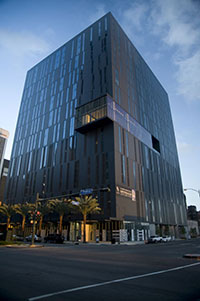
In the aftermath of the 9/11 terrorist attacks and subsequent shootings at college campuses, Western Michigan University officials decided to strengthen the university’s overall life-safety, property protection and emergency preparedness program.
In the aftermath of the 9/11 terrorist attacks and subsequent shootings at college campuses, Western Michigan University officials decided to strengthen the university’s overall life-safety, property protection and emergency preparedness program.
At the core of the effort is the Simplex TrueSite workstation, a graphical life-safety information management system developed specifically for large network installations. The platform enables multiple panels and buildings to be monitored and controlled from a single location.
Linked to a voice-enabled Simplex 4100U fire detection, alarm and notification system, WMU operates a campuswide, multilayered emergency communications network. One component is the nearly 4,000 speaker devices inside its buildings and more than 32 external speakers covering more than 75 percent of the 400-acre campus.
WMU took advantage of existing capability and infrastructure investment by leveraging the university’s fire alarm network. The plan involved the installation of fiber-optic cabling and an upgrade of WMU’s fire alarm network to the Simplex 4100U fire detection and alarm platform. That platform offers digital voice communications and advanced system diagnostics.
As part of its life-safety network, the TrueSite information management system interacts with and processes information from thousands of detectors, notification appliances and other network devices. In an emergency, the system receives incoming data from various system devices and can automatically provide campus operators with action messages, detailed floor plans and even step-by-step instructions on how to respond.
WMU is able to transmit communications over its fire alarm network. The displays use graphical maps with icons to provide the operator with an exact location of each device. Authorized operators can then select the coverage area and the type of message they wish to play, or send out a customized message.












